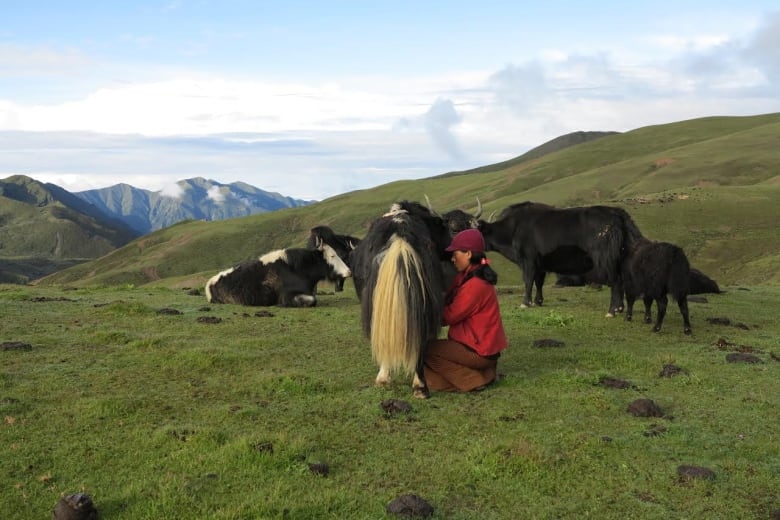ENCORE | Where in the world is the best tasting butter?

One of the most memorable stops on food writer Elaine Khosrova's search for the world's best and most interesting butter was the top of a mountain in Bhutan.
She hiked 4,000 metres up to camp among the nomadic people who make butter the same way their ancestors have been for thousands of years. Herds of yaks roam free, and every morning they milk them to make butter and cheese to sell at markets down in the villages.

But it was the butter made from water buffalo milk in India that she still dreams about.
"I still rhapsodize about that water buffalo butter in India," Khosrova tells The Current's Anna Maria Tremonti in November.

"I'm certain it's because they take that milk — a super rich milk — and ferment it overnight They make something like a yogurt. And they churn that whole milk yogurt," she says.
"I've had water buffalo butter from Italy that's nothing like the one from India. I do think that whole culturing overnight gives it an incredibly rich, deep, complex nutty buttery flavour, it's one of the best butters I've ever had."
But it was the use of butter in spiritual practices that Khosrova found the most surprising in her research for her book Butter: A Rich History.
"The Sumarians, Druids, Vedic Aryans, Hindus all had practices way back when using butter".


Butter was likely invented by accident — with milk being carried in animal sacks over long distances turning the liquid into rich, fatty morsels. But it was the industrialization in the late 1800's when things really changed for butter.
Butter officially "left home" and started to be produced in factories that could ensure a uniform product. That's the butter that most of us still eat today, but Khosrova says there's a whole world of butter out there.
"Butter is essentially one ingredient but can result in many different variations — ones that are fudgy, ones are greasy, some are super fatty and others that are lighter. The colours, the textures, there's quite a lot of variation."
Listen to the full conversation at the top of this web post.
This segment was produced by The Current's Liz Hoath.